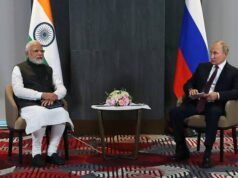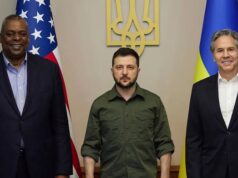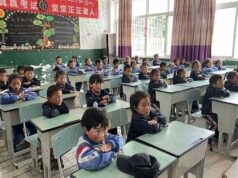China’s Belt And Road Projects Causing Economic Problems

Due to its proximity to China, India is the only country which has a very clear idea on the BRI and the danger it poses. To deal with this, New Delhi is evolving its own plans to counter the BRI project.
India should intensify and take over the development projects and to steer the Indo-Pacific Development initiative and also strengthen the BIMSTEC and ASEAN institutions.
China’s Belt and Road Initiative (BRI) poses immense economic risks for nations globally, while G7’s Build Back Better World (B3W) seems to be totally confused needs more clarity.
Due to its proximity to China, India is the only country which has a very clear idea on the BRI and the danger it poses. To deal with this, New Delhi is evolving its own plans to counter the BRI project.
Under the BRI, there are potential risks in terms of local economy and corruption to the nations that are part of the Chinese initiative. As BRI does not care about labour or environment or transparency standards.
In Solomon Islands, its premier Daniel Suidani had refused the bribe from China and had opposed the CCP’s plans for the Pacific Ocean Island nation.
“CCP, infects the economic, political and judicial structures of nations that join the BRI. And, those nations who have joined the BRI, CCP then subsequently take over their capital investments and economic independence, ” said Ms Paskal, an Associate Fellow with London-headquartered Chatham House and a Senior Fellow for the Indo-Pacific in the Centre on Military and Political Power at the Washington DC-headquartered Foundation for Defence of Democracies.
On the other hand, “G7’s B3W initiative includes geopolitical content, but the business lobbyists involved in the initiative would perforce recast it to geo-economics,” she adds.
According to Seshadri Chari, G7 nations cumulatively are a $34-trillion GDP economy with an average per capita GDP of $43000, while China is a $15-trillion GDP economy and has an average per capita GDP of $11000. China has a population of 1.45 billion, and the G7 nations have a population of 775 million.
Mr Chari also pointed out that in 1946, Mao Zedong had observed that a time would come when both the US and the then USSR would lose their dominant status as a global power and that there would be an Intermediate Zone when Communist China would rise to become a global power.
“G7 nations would be spending up to USD 40 trillion under the B3W Initiative to operate in democratic nations only in the regions from Caribbean to Indo-Pacific, yet it has to start fresh. China, on the other hand, has already committed to $4.2 trillion covering 1,600 projects, be it in a Capitalist or a Socialist or a Communist nation across the globe in nearly 160 countries,” he added.
And, “as there are massive profits in infrastructure projects the funds for B3W will be sourced from private enterprises, while funds for China’s BRI funds are coming from that country’s own sources, Asian Development Bank, World Bank and International agencies,” Mr Chari, Secretary General of Mumbai-headquartered Forum for Integrated National Security said.
In his opinion, “BRI isn’t an economic, global, development, multilateral project. It is a unilateral project and the focus is to take over as many projects as possible which would make China the leader of the new world order.”
The focus of B3W would be on working with democratic nations with several conditions( this the trick part to control the polity ) including against child labour, transparency, democracy ( these things are focused upon as it suits them ), and adhering to the rules of the United Nations ( many a times they themselves try and become the United Nations themselves ), China takes its BRI to all nations – whether there is dictatorship or military rule or socialist or capitalist.
Therefore it is India that should intensify and take over the development projects and to steer the Indo-Pacific Development initiative and also strengthen the BIMSTEC and ASEAN institutions.




